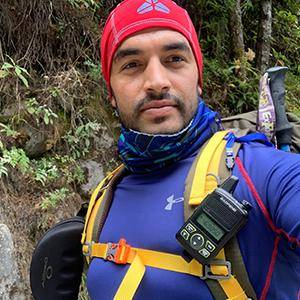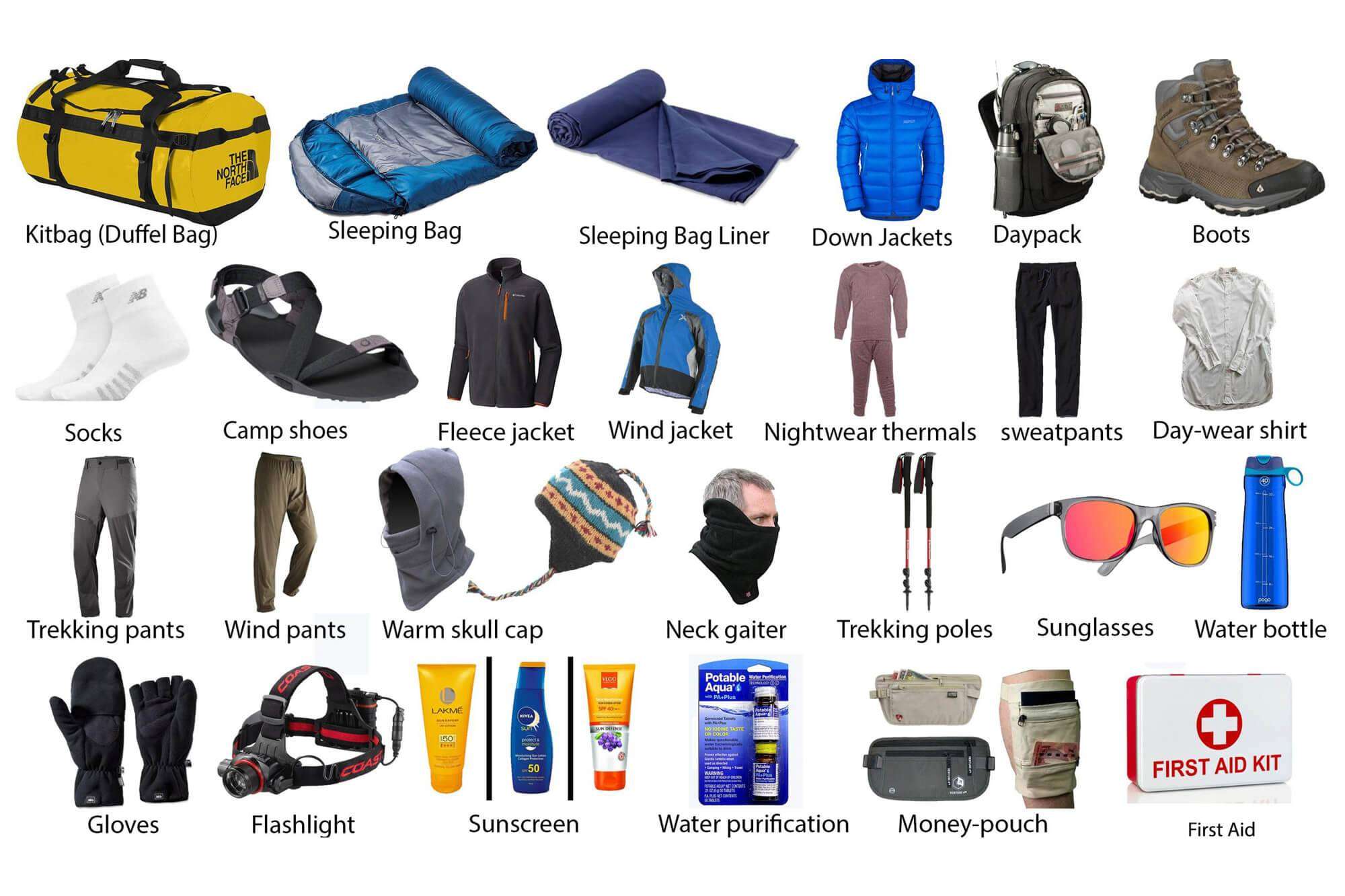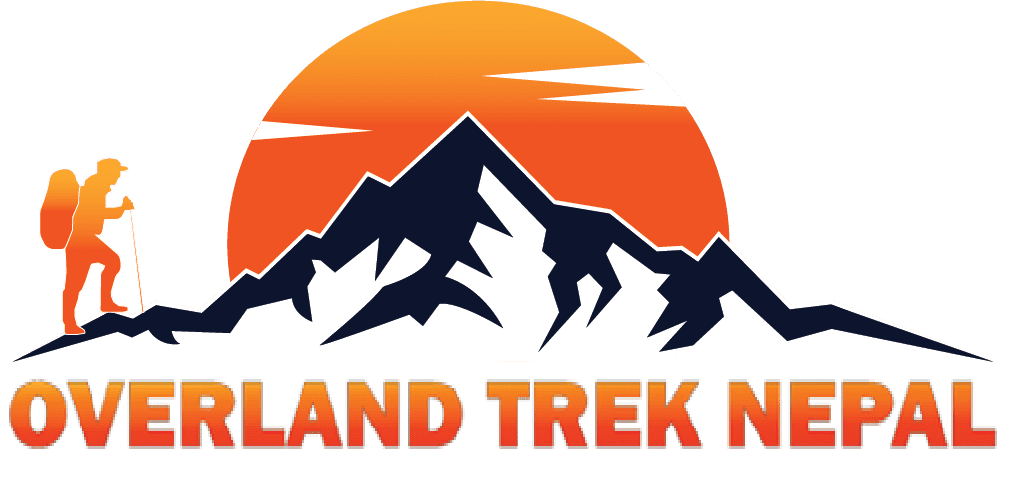The payment is encrypted and
No Booking Fee
No Cancellation Fee

Do not hesitate to give us a call, WhatsApp or email us. We are always there to help you to make your tour safe and entertaining.
Lobuche Peak Climbing is a difficult alternative for those who desire to climb a Himalayan peak higher than 6,000 meters in the Everest Region, from the peak of Lobuche East, you will get spectacular panoramic views of the Everest region. The Lobuche Mountain, a renowned hiking peak, has two summits: Lobuche East and Lobuche West
Lobuche East is more accessible and easier than Lobuche West, which has a more technical and demanding path. The climbing excursion, combined with a high-altitude trek to Everest Base Camp, is the ideal challenge for explorers looking for a technical challenge over 20,000 feet in the Himalayas, boasting views of Mahalangur range, along with Lhotse, Ama Dablam, Pumori, and several others.
Lobuche Peak Climbing trail takes you past various beautiful villages, dense forests, the high Himalayan plateau, mountain ridges, sheer cliffs, and glaciers, discovering various flora and fauna along with the culture, traditions, and lifestyle of the indigenous Himalayan settlements.
Throughout the Lobuche Peak Climbing, you’ll be guided by a team of experienced and professional climbing guides. These guides will assist you on various excursions of the places from acclimatization hikes, pre-climbing, and various use of ropes and other instruments used while climbing Lobuche Peak. Join us for this unique and wonderful Lobuche peak climbing experience.
The following Permits are required:
You can get a Sagarmatha National Park Entry Permit from the Nepal Tourism Board office in Kathmandu or the park’s entrance gate in Monjo whose fee is NRS 3000 for foreign countries citizens and NRS 1500 for citizens of SAARC countries.
You must fill out an application for permission and show your passport or a copy of your passport. To obtain the Khumbu Pasang Lhamu Rural Municipality Entrance Permit, you must be in Lukla. The permit costs NRS 2000 and can be obtained at the rural municipality counter on the settlement’s outskirts.
If you want to hike from Jiri, you’ll need to pay NRS 2,000 at the Gaurishanker Conservation Area Project Entry Permit or you must receive a permit from the Nepal Tourism Board’s headquarters in Kathmandu.
You won’t have to wait for permits because the company or our guides will handle everything.
The flight into Kathmandu is stunning, view of the valley below and the Himalayan ranges towering above. As, you land and check out from the Tribhuvan International Airport our agent will greet you, and drive you to your hotel, later in the evening you’ll be assisted with all of your travel requirements for the trek.
Maximum Altitude: 1400m
Meals: Welcome Dinner
Accommodation: Alpine hotel and apartment or as per your requirement.
Today you’ll be introduced to your climbing guide, after a brief introduction by the guide about general guidelines and the final equipment check for the trek, you’ll have the rest of the day to yourself. In the evening will go for a welcome dinner which will be a Nepali typical Nepali thakali thali set.
Maximum Altitude: 1440m
Meals: Breakfast, Lunch, Dinner
Accommodation: Alpine hotel and apartment or as per your requirement
Duration: 30-minute flight, 3-4 hours (8 km) trek
An early morning flight to Lukla is the starting of your adventure, after you get to Lukla meet with the rest of the team then have a very hot breakfast in Lukla, and head out on the adventure.
Descend past Chauri Kharka village to the Dudh Koshi River, a lovely trail that follows the river’s bank leading to Phakding (2,610m). while you walking you will cross so many suspense bridges, once you arrive at Phakding take a stroll around the village chat with the locals, or stop by one of the cafés for a hot beverage if you’re not too tired.
Maximum Altitude: 2840m
Meals: Breakfast, Lunch, Dinner
Accommodation: Guesthouse
Walking Distance: 6-7 hours (10.5 km) trek
After your early morning hot breakfast will set out for Namche Bazaar, the trail today passes through a milky glacial river Dudh Koshi, up to Monjo, walking across numerous suspension bridges, and through mesmerizing pine and conifer forests.
Before arriving at the Sagarmatha National Park entrance arrange your permits for inspection, from here trekking down alongside the Dudh Koshi River to Jorsale, it’s a tough climb up around 2 hours to Namche Bazaar, brace yourself to catch your first glimpse of Mount Everest
Maximum Altitude: 3440m
Meals: Breakfast, Lunch, Dinner
Accommodation: Guesthouse
Walking Distance: 4-5 hours (6 km) trek
This is your first day of acclimatization as you climb higher, there are several vantage points in the village where you can go for an acclimatization hike, hike up to any of the vantage points for stunning views of the Himalayas, so this day you will wake up early morning and move to the Sagarmatha national park museum for early sunrise with white mountains then will be back to the hotel to have breakfast than a hike to the Khumjung and Kunde settlements or visit Sir Edmund Hillary’s school in Khumjung and visit 400 years old Khumjung Monastery. Then can move ahead to the Everest View Hotel from where will see amazing beautiful mountain views along with Mt. Everest then back to Namche Hotel and chill your day.
Maximum Altitude: 3440m
Meals: Breakfast, Lunch, Dinner
Accommodation: Guesthouse
Walking Distance: 3-4 hours (6 km) trek
After your early morning breakfast will start your trek to Tengboche, Himalayan giants Everest, Nuptse, Lhotse, Ama Dablam, Thamserku, and Kwangde can be seen from the trail, passing through Oak, Juniper, Confers, and Rhododendron forests today.
Tengboche is the destination for today’s trek, where the Khumbu region’s oldest Buddhist monastery Tengboche Monastery emerges over the settlement. Additionally, sunrise and sunset at dawn and dusk, are not to be missed. In the beginning, the walking way is very easy flat, and downhill, and when you cross the Imja Khola river through the suspension bridge will take a lunch break then after the lunch break will start to climb slowly uphill to Tengboche.
Maximum Altitude: 3860m
Meals: Breakfast, Lunch, Dinner
Accommodation: Guesthouse
Walking Distance: 5-6 hours (11 km) trek
After your early morning breakfast will head on your way to Dingboche, you’ll cross through the plains to the Imja Khola (River) views of Island Peak and Ama Dablam are breathtaking from the trail, the settlement of Pangboche is home to the region’s largest permanent Sherpa settlement where you’ll experience a unique Sherpa ambiance, lifestyle and delicious local cuisine. From Pangboche proceed to Dingboche which is a very easy way to walk for the day.
Maximum Altitude: 4410m
Meals: Breakfast, Lunch, Dinner
Accommodation: Guesthouse
Walking Distance: 4-5 hours (4.5 km) trek
This is your second day for acclimatization so after your early morning breakfast will start our hike as per your guide’s instructions, trekkers and climbers have plenty of things to do here, including an acclimatization hike to Nangkatshang or Nagarjun Hill (5,100 m) or various other vantage points. Relax or go for a walk once you head back to the village.
Maximum Altitude: 4410m
Meals: Breakfast, Lunch, Dinner
Accommodation: Teahouse
Walking Distance: 5-6 hours (8 km) trek
After your early morning, delicious breakfast continue the trek to Lobuche, today’s walking way is a slightly flat part till Thukla then from there steep up a tiny village with spectacular views of Lobuche, Pumori, and Nuptse. From the trail, you can see the border Himalayan peaks that separate Nepal and Tibet. Lobuche is a small settlement made up of a few local homes and teahouses that offer basic services, where will have lunch and take a rest then in the evening go for short hiking then back to the hotel and chill.
Maximum Altitude: 4910m
Meals: Breakfast, Lunch, Dinner
Accommodation: Teahouse
Walking Distance: 5-6 hours (8 km) trek
After your early morning breakfast, will move to Gorakshep which will take 2-3 hours through the rocky moraine and glaciers part. Although today’s trek is one of the most memorable, it is challenging. So, take it slowly and steadily, as directed by your guide. Gorak Shep is only a few hours away from Lobuche, climb up to Everest Base Camp after taking a lunch break and leaving your heavy belongings at the teahouse.
The Everest Base Camp is, at an elevation of 5,364 meters (17,598 feet) Mountain climbers use the base camps, which are basic campsites while climbing Everest, then back to the hotel and spend the night there.
Maximum Altitude: 5,140m
Meals: Breakfast, Lunch, Dinner
Accommodation: Teahouse
Walking Distance: 6-7 hours (12 km) trek
Today early morning you will hike to Kala Patthar, the most popular viewpoint in the Everest Region at 5,550 meters from where views of Mount Everest, Pumori, Nuptse, and Lhotse from a snowy ring around Kala Patthar, with a 360-degree panoramic view of these Himalayan vistas. Later, return to Gorak Shep and have breakfast, and slowly proceed back to Lobuche.
Maximum Altitude: 5,550m
Meals: Breakfast, Lunch, Dinner
Accommodation: Teahouse
Walking Distance: 6-7 hours (12 km) trek
After having an early breakfast, hike up to High Camp from Lobuche, it’s a difficult ascent that includes trails through the Lobuche Glacier and a rocky moraine, you’ll reach High Camp in just over two hours, the tents will be set up by your team so after you arrive at High Camp have your lunch and get ready for the pre-climb training.
This training provides climbers with the fundamental skills they will need to summit Lobuche. So, after the training rest as you’ll be summiting the peak tomorrow.
Maximum Altitude: 5,400m
Meals: Breakfast, Lunch, Dinner
Accommodation: Tent
Wake up as fast as possible around 1 a.m. or earlier, you’ll begin the ascent to the peak of Lobuche East around 2 a.m. The trail is rough with a high incline and as you arrive at Crampon Point after trekking for approximately two hours or so, put on your crampons as the trail from here is covered with snow and ice along the Lobuche glacier, ropes are secured at steep sections, and you’ll use ascenders to get to the top, climbing Lobuche Peak is far more technical and difficult. Hike to the peak in roughly 5-6 hours from high camp. Enjoy close-up views of Mount Everest, Lhotse, Makalu, Cho Oyu, Barun Tse, Ama Dablam, Chamlang, Thamserku, Gaurishanker, and Dudh Kunda area can be seen from the top.
From the summit, the overall valley appears to be gorgeous with a different perspective of the area. After spending some time at the summit make your way down to High Camp, rappelling down in most of the sections.
At the High Camp, after a short break for lunch, descend and follow the trail to Thukla En route, pass across Thukla Pass, the trail is level from here till Pheriche a little village that is located directly above the Tsola River.
Maximum Altitude: 6,119m
Meals: Breakfast, Lunch, Dinner
Accommodation: Teahouse
If your summit attempt is canceled due to severe weather or illness, this extra day has been set aside for summiting, this day can also be used in the case of an emergency, such as airline delays or other unanticipated situations that force us to cancel a day of your vacation.
If all goes according to plan, the additional day may be used to take it easy and explore more of the path. Alternatively, you might spend the additional day tour in Kathmandu.
After your early morning, breakfast Leave Pheriche and travel to Namche Bazaar, the barren treeless environment is replaced with lush pine and juniper woods as you descend, past the settlement of Pangboche, and Tengboche before descending to Namche.
Upon reaching Namche Bazaar head to your tea house and rest, have various types of cuisine, and relax in the heart of Everest (Namche Bazaar)
Maximum Altitude: 3,4409m
Meals: Breakfast, Lunch, Dinner
Accommodation: Teahouse
After your morning breakfast retraces your steps back to Lukla, it’s a downward trek through pine, oaks woods, glacial rivers, and snow-capped Himalayan peaks, you will have lunch on the way to Lukla when you feel hungry then when you get to Lukla, will get teahouse and relax and celebrate your final evening in Khumbu with your team.
Maximum Altitude: 2,840m
Meals: Breakfast, Lunch, Dinner
Accommodation: Teahouse
Duration: 30 minutes flight
After your breakfast you will take an early morning flight from Lukla to Kathmandu, flying parallel to the world’s highest peaks and once you arrive at Kathmandu, you’ll be driven to your accommodation. Take a break or go souvenir shopping.
In the evening, a special cultural program and a farewell dinner will be served to commemorate the end of your journey.
Maximum Altitude: 1,400m
Meals: Breakfast and Dinner
Accommodation: Alpine Hotel & Apartment
Our staff will drop you off at the airport, you’ll bid farewell to your newfound friends as well as Nepal.
NOTE: All of the trekking hours and distances mentioned above are estimates and should only be used as a general guideline.
Spring (March to May) and autumn (mid-September to November) are the best times to trek to Everest Base Camp. In spring, the foothills are ablaze with wildflowers, rhododendron blossoms, and orchids hanging from branches, the weather is dry and clear during this season, making it ideal for trekking and exploring the breathtaking scenery of the mountains. In autumn after the end of the heavy monsoon season, with a clear atmosphere and the days are warm though the evenings are quite chilly trekking to Everest Base Camp is extremely popular.
Travel insurance is required for all clients participating in any activity. We strongly advise you to obtain a complete insurance plan from a reputable insurance company to cover personal injury, death, hospital expenses, repatriation fees, helicopter rescue, and any other disease covered by the insurance plan.
The Nepalese consulate in your country or the immigration office at Tribhuvan International Airport in Kathmandu must issue each client with a valid visa with a six-month validity from the date of return.
In popular trekking regions such as Annapurna, Everest, Langtang, and Manaslu, there is a menu system with various ethnic cuisines foods as well as western meals, but some locations provide you with typical Nepali meals which are different from international meals, and these meals are prepared by the local supplement, every tourist lodge and tea house has a well-trained cook who focuses on clean, hygienic, fresh, and delicious foods, and every lodge has safe drinking water or mineral water.
If you buy a water purification tablet in Kathmandu, you can take water tap water and purify it yourself, saving money and reducing plastic pollution.

Lobuche Peak is considered a challenging trekking peak, requiring a good level of physical fitness and some prior high-altitude trekking experience. While it is a non-technical climb, the ascent involves steep sections, rocky terrain, and some crevasses. Adequate acclimatization and basic mountaineering skills are recommended for a successful and safe climb.
The optimal times for Lobuche Peak Climbing are during the pre-monsoon (spring) from April to June and post-monsoon (autumn) from September to November. These seasons offer stable weather conditions, clear skies, and comfortable temperatures, providing the best chances for a successful ascent and stunning views.
Yes, climbers need to obtain a climbing permit for Lobuche Peak, which is issued by the Nepal Mountaineering Association (NMA). Additionally, the Sagarmatha National Park Entry Permit is required as the climb is within the park’s jurisdiction. These permits can be obtained through authorized trekking agencies in Kathmandu.
The summit altitude of Lobuche Peak is approximately 6,119 meters (20,075 feet). Climbers will experience breathtaking panoramic views of the Khumbu region, including iconic peaks like Everest, Lhotse, Nuptse, Ama Dablam, and many others from the summit, making the climb a rewarding and unforgettable experience.
